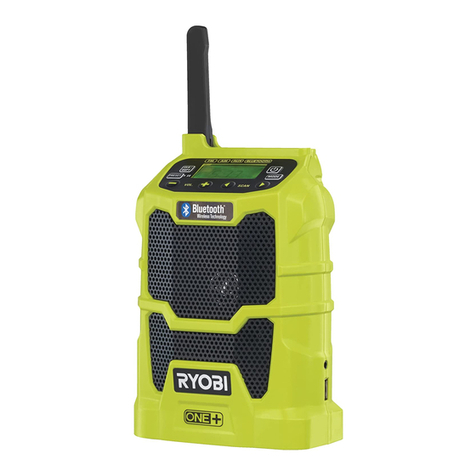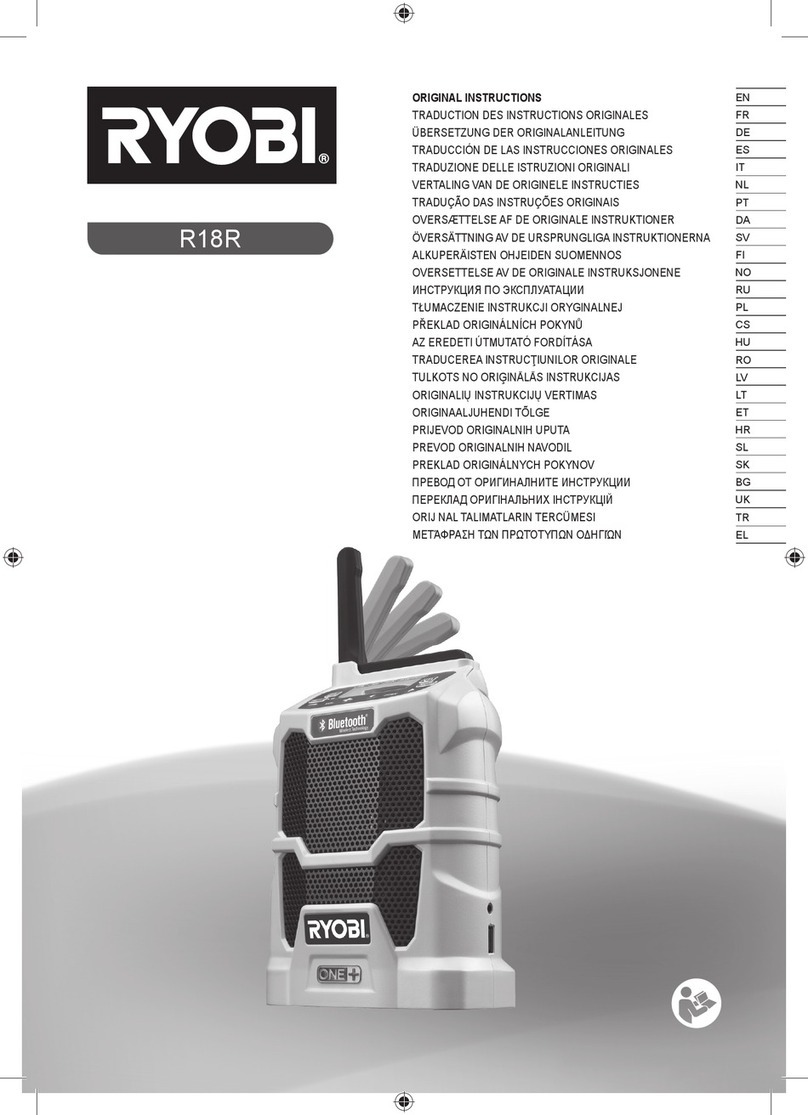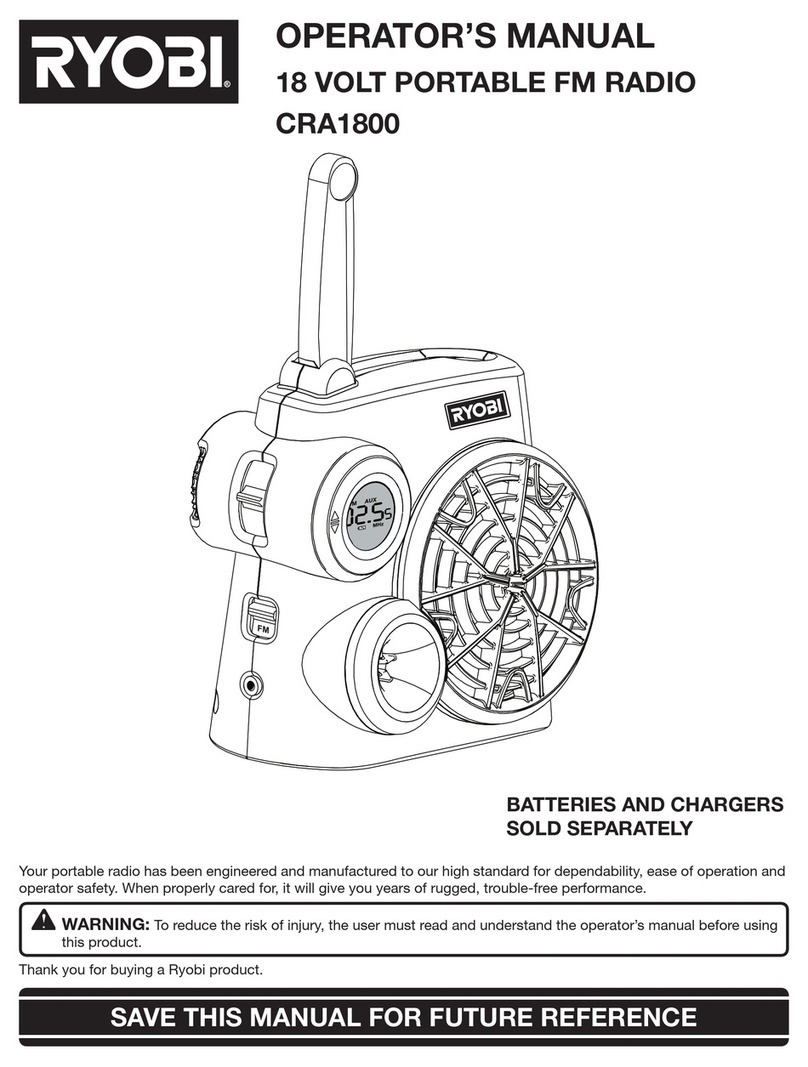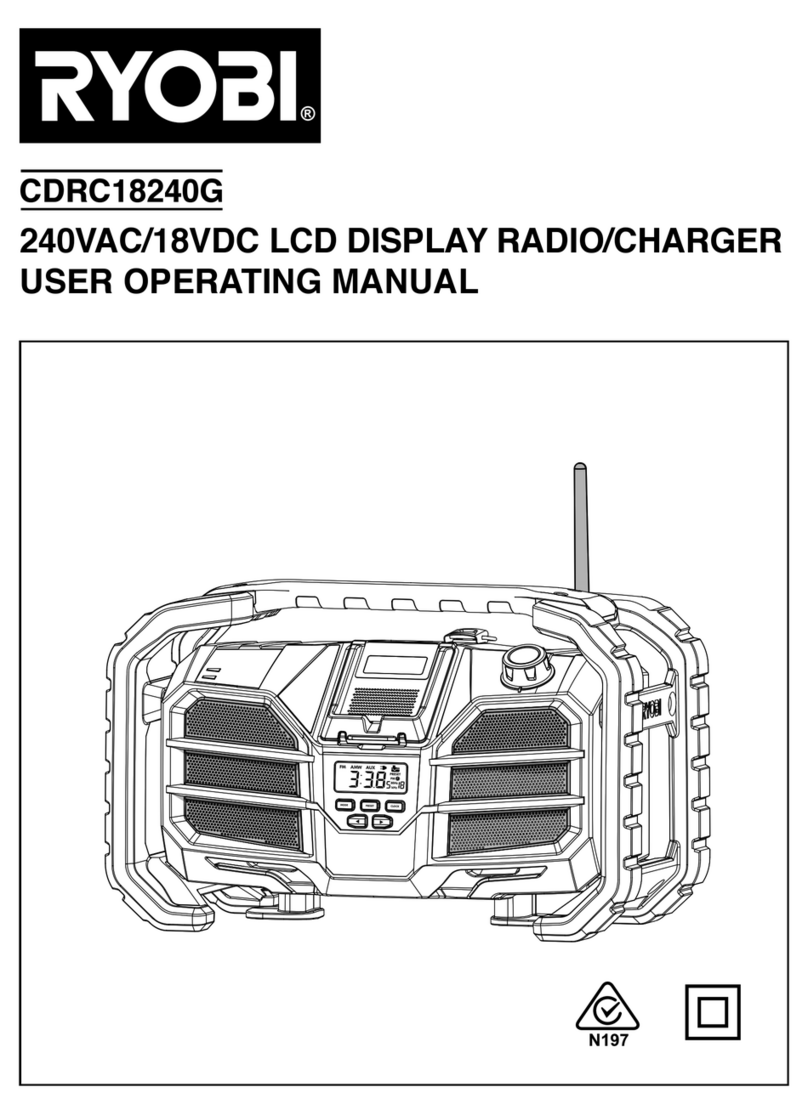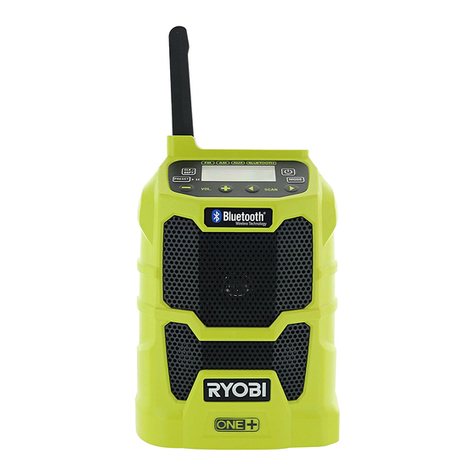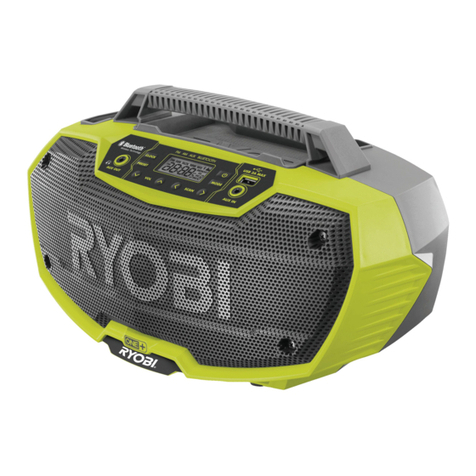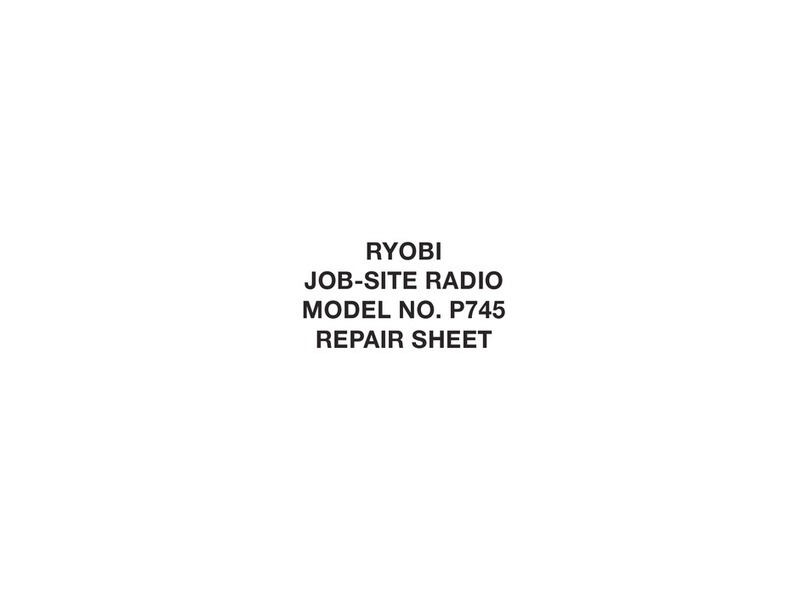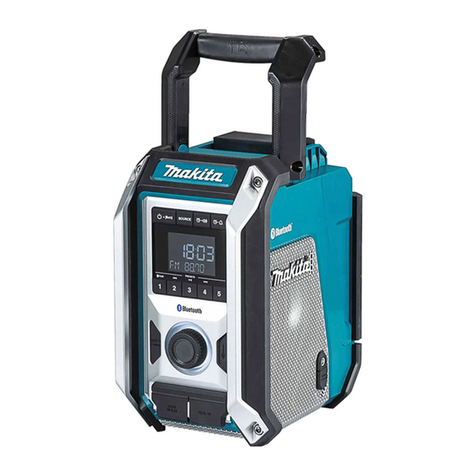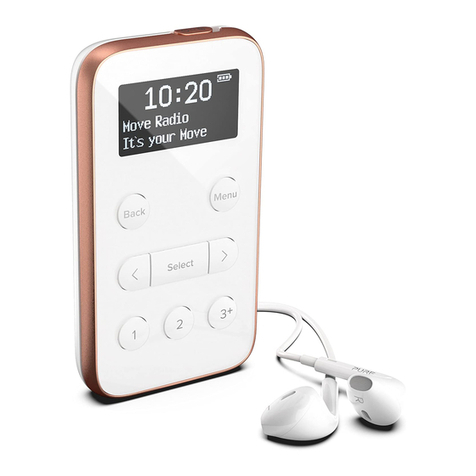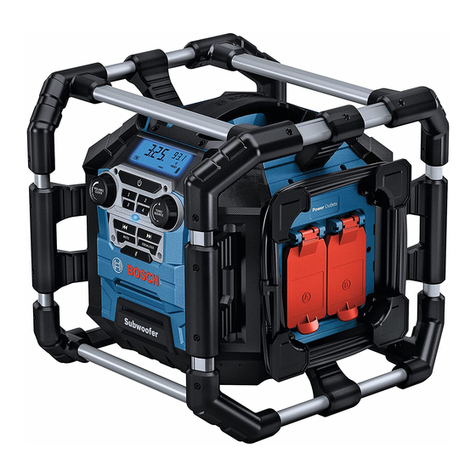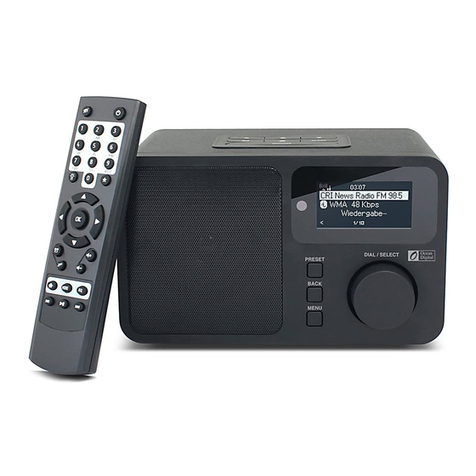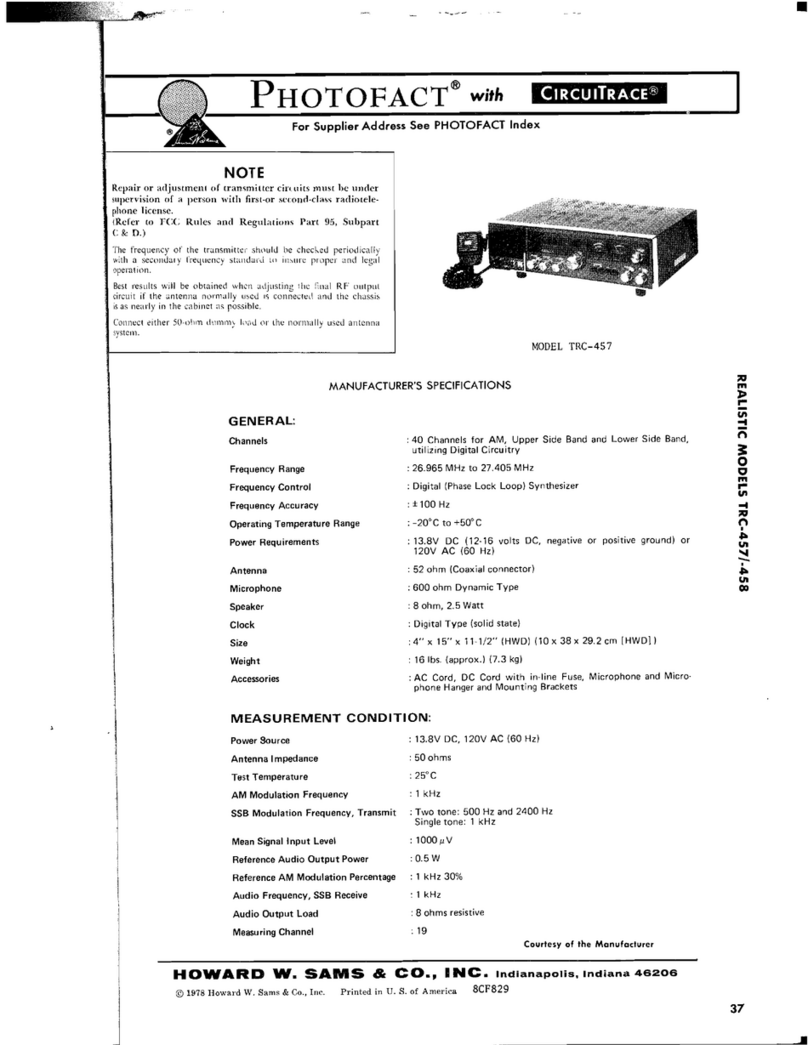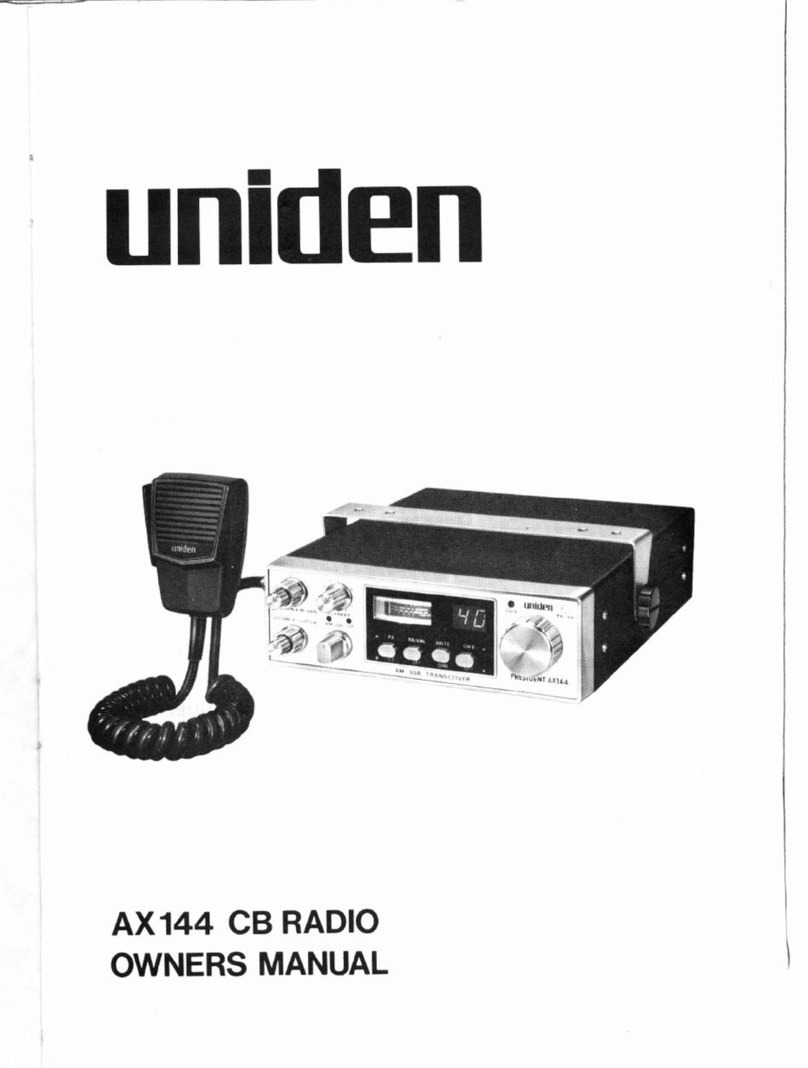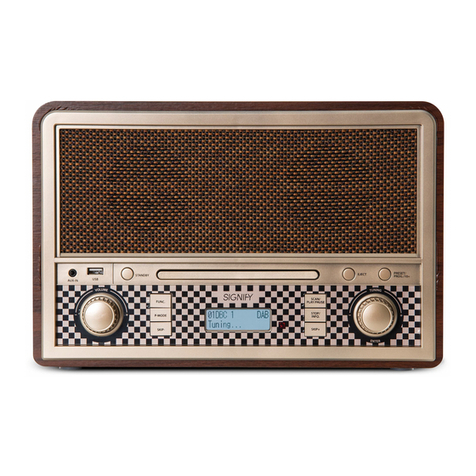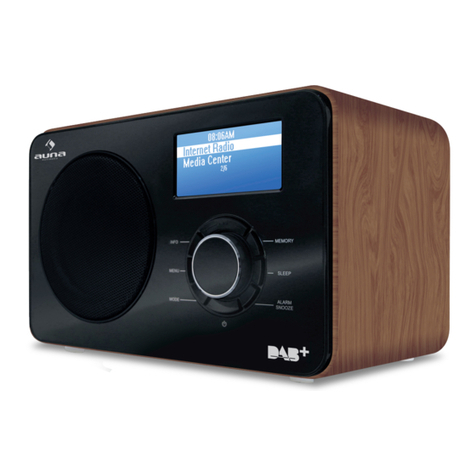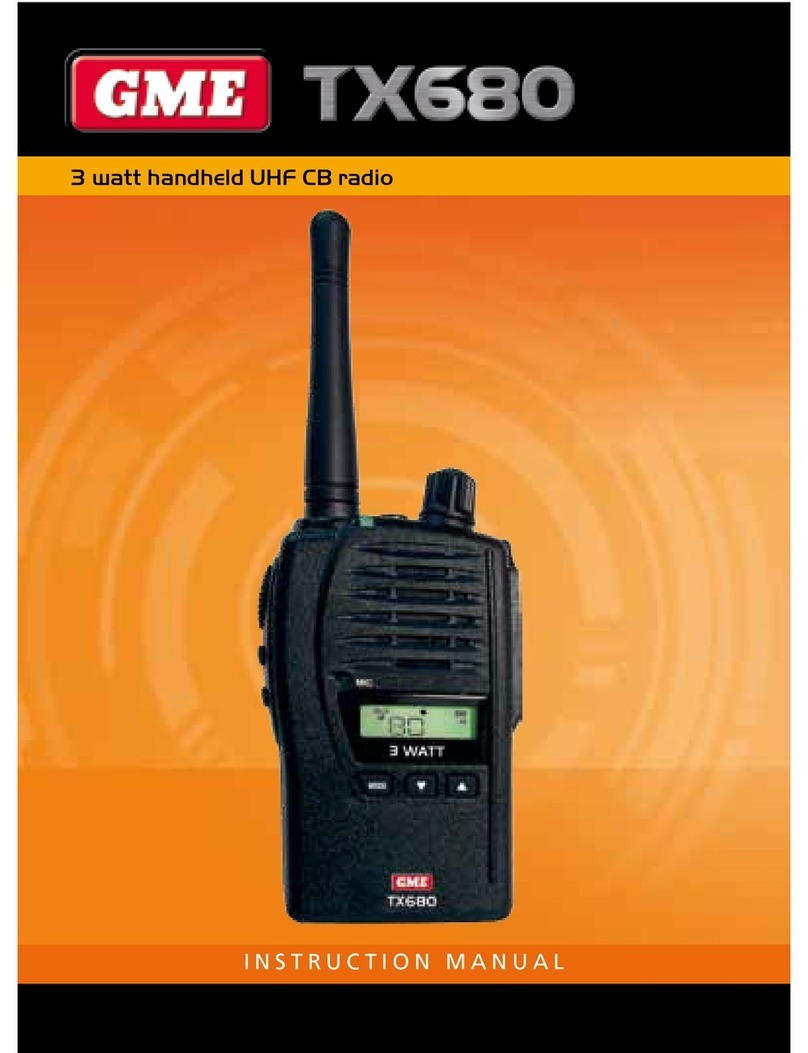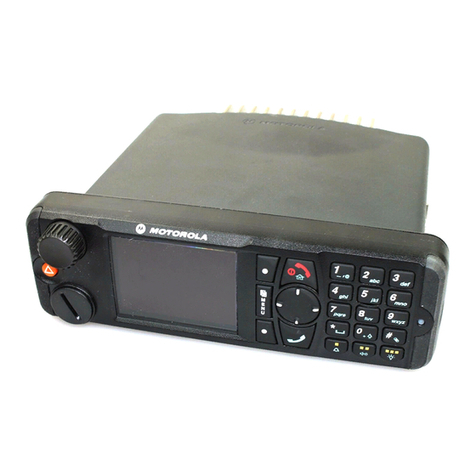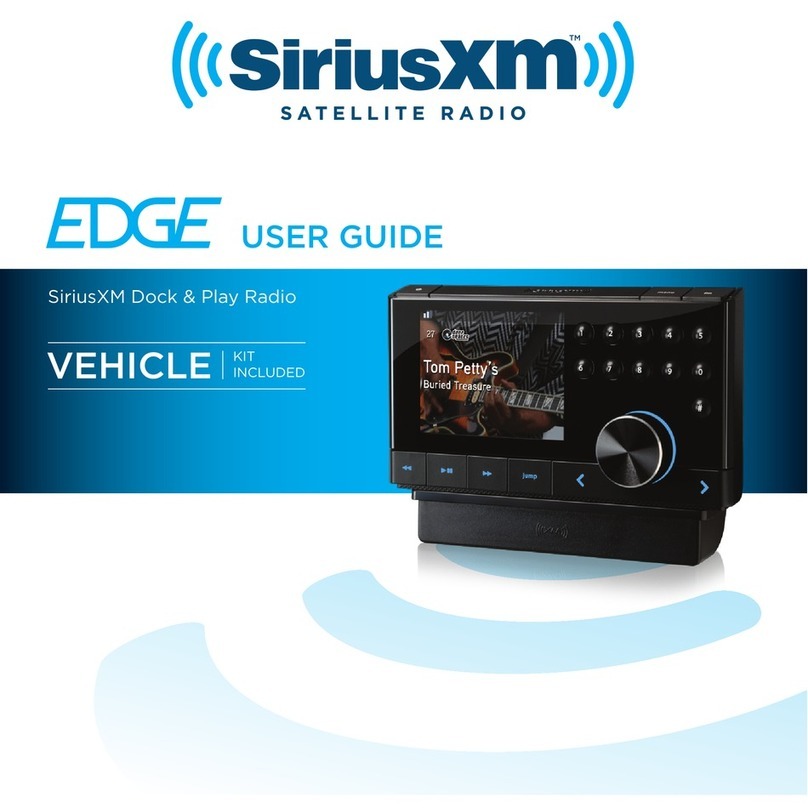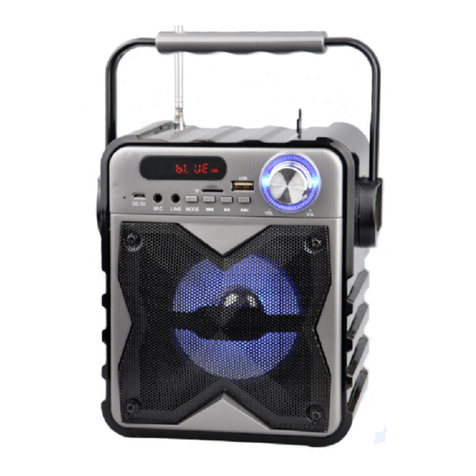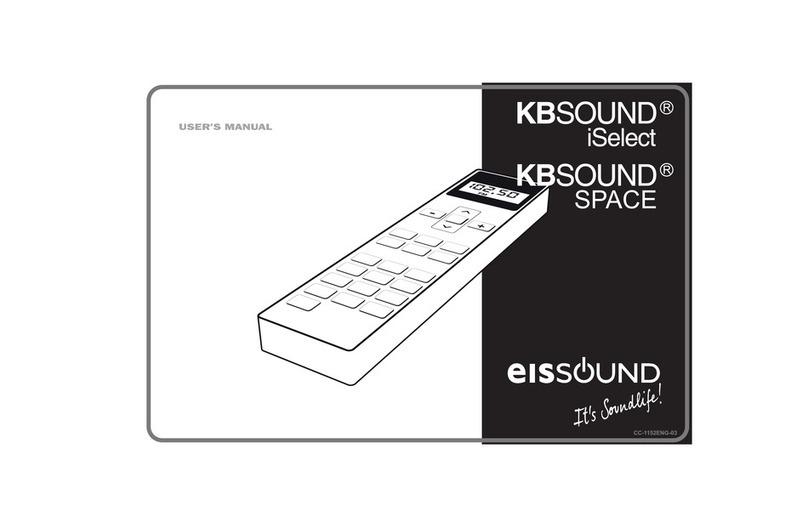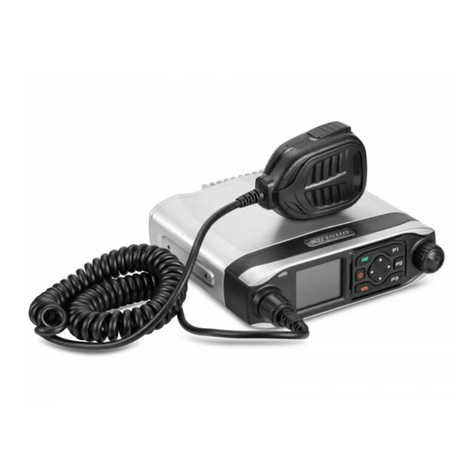3
Safety, performance, and dependability have been given
top priority in the design of your radio.
INTENDED USE
The product is intended for:
Ŷlistening to FM/AM radio, MP3 players, and other audio
devices
Ŷcharging USB capable devices
Ŷstreaming audio from BLUETOOTH®enabled devices
Do not use the product in any way other than those stated
for intended use.
GENERAL SAFETY WARNINGS
WARNING
Read all safety warnings and all instructions. Failure
to follow the warnings and instructions may result in
HOHFWULFVKRFN¿UHDQGRUVHULRXVLQMXU\
WARNING
The product is not intended for use by persons (including
children) with reduced physical, sensory or mental
capabilities, or lack of experience and knowledge,
unless they have been given supervision or instruction
concerning use of the product by a person responsible
for their safety.
Children should be supervised to ensure that they do not
play with the product.
ŶDo not use the product near water.
ŶClean only with dry cloth. Never use brake fluids,
gasoline, petroleum-based products, or any strong
solvents to clean the product. Following the rule will
reduce the risk of loss of control and deterioration of the
enclosure plastic.
ŶDo not block any ventilation openings. Install in
accordance with the manufacturer’s instructions.
ŶDo not place the product in closed bookcases or racks
without proper ventilation. Allow a minimum distance of
5 cm from any foreign object.
ŶDo not place product near any heat sources such as
radiators, heat registers, stoves, or other products
(including amplifiers) that produce heat.
ŶOnly use attachments and accessories specified by the
manufacturer.
ŶRefer all servicing to qualified service personnel.
Servicing is required when the product has been
damaged in any way, liquid has been spilled or objects
have fallen into the product, the product has been
exposed to rain or moisture, does not operate normally,
or has been dropped.
ŶWhen servicing the product, use only manufacturer’s
replacement parts, accessories and attachments.
Follow instructions in the Maintenance section of the
manual. Use of unauthorized parts or failure to follow
Maintenance instructions may create a risk of shock or
injury.
ŶKnow your product. Read operator’s manual carefully.
Learn its applications and limitations, as well as the
specific potential hazards related to the product.
Following the rule will reduce the risk of electric shock,
fire, or serious injury.
ŶDo not operate the product in explosive atmospheres,
such as in the presence of flammable liquids, gases,
or dust. The product may create sparks that may ignite
the dust or fumes.
ELECTRICAL SAFETY
ŶA battery operated product with integral batteries or a
separate battery pack must be recharged only with the
specified charger for the battery. A charger that may be
suitable for one type of battery may create a risk of fire
when used with another battery.
ŶUse battery operated product only with specifically
designated battery pack. Use of any other batteries
may create a risk of fire.
ŶUse 18 V lithium-ion battery packs.
WARNING
Danger of explosion if battery is incorrectly replaced.
Replace only with the same or equivalent type.
PERSONAL SAFETY
ŶDo not use the product to listen to music or other audio
programs while operating machinery. Doing so may
cause distractions that could result in serious personal
injury.
ŶThe product is capable of producing sound levels that
can be dangerous to long-term hearing. Listening to
music at high volume for any period of time may cause
noise-induced hearing loss. The higher the volume, the
less time required before your hearing may be affected.
PRODUCT USE AND CARE
ŶWhen battery pack is not in use, keep it away from
other metal objects like paper clips, coins, keys, nails,
screws, or other small metal objects that can make a
connection from one terminal to another. Shorting the
battery terminals together may cause sparks, burns, or
a fire.
ŶKeep the product dry, clean and free from oil and
grease. Always use a clean cloth when cleaning.
ŶBattery products do not have to be plugged into an
electrical outlet; therefore, they are always in operating
